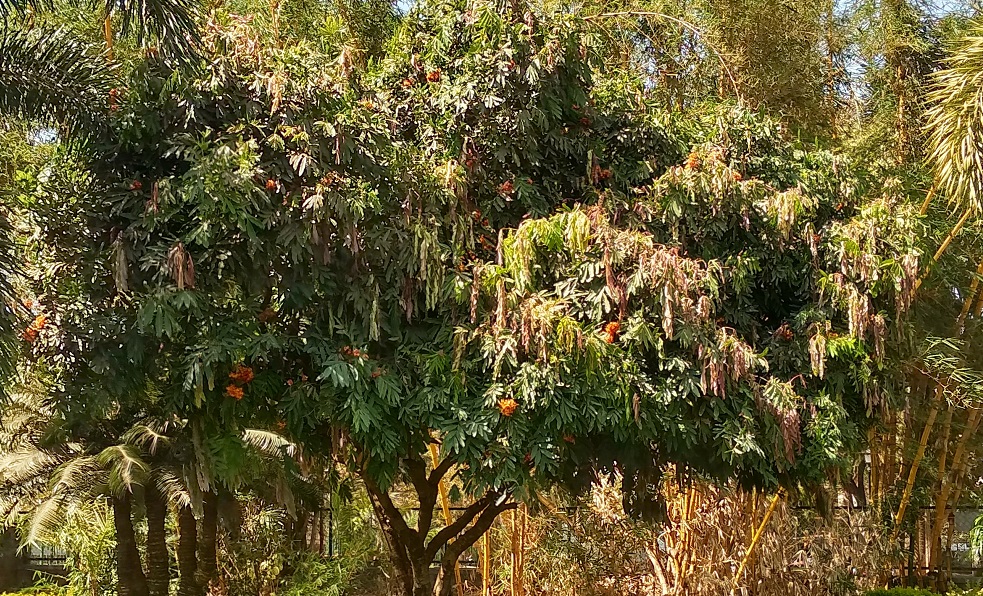Ashoka Tree

Saraca Asoca Roxb
Summary
Scientific Classification
Kingdom : Plantae
Division : Magnoliophyta
Class : Magnoliopsida
Order : Fabales
Family : Caesalpinaceae
Genus : Saraca
Species : S. asoca
Scientific Name : Saraca asoca Roxb.
Common Names
English : Ashoka Tree
Hindi: Sita Ashoka, Vand Ichitra
Kannada: Achenge, Ashanke, Kenkalimara, Ashokadamara
Marathi: Ashok, Jasundi, Sita Ashoka
Description
- Habit and Habitat: Terrestrial, grows at an altitude of 750 m above the sea level6 and in fertile and semi-fertile soil. Height up to 9-10mts. Perennial, which can range from dark green to greyish green in colour.
- Distribution: It is found all over Indian subcontinent. Native to the Western Ghats and Deccan plateau. It also found in central and Eastern Himalayas.
- Morphology: Leaf: It is a Paripinnately Compound leaves, alternate, distichous and 7-30 cm long and its petiolule 0.1-0.6 cm long and opposite leaflets, 4-6 pairs, narrow elliptic-oblong or lanceolate, and its apex acute to acuminate, base acute to rounded or subcordate, glabrous, midrib raised above and tertiary nerves reticulate. Inflorescence: Dense Corymbs Flower: Bracteate, brateolate, Calyx small petaloid, Corolla tube long, 5 petals. Androecium: 10 stamens, long, yellow at the base red at tapering ends, bilobed. Gynoecium: Ovary superior, many ovules, style long, stigma very small. Fruit: Pod, compressed, oblong, about 15cms long, dehisce longitudinally. Seeds: obovate-orbiculate.
- Propagation: Through seeds.
-
Importance:
Grown as ornamental tree in gardens. Highly Medicinal valued. It is anti-microbial, anti-ulcer, anti-oxidant, anti-cancerous, larvicidal activity, anti-inflammatory, anti-diabetic, anti-helminthic. - Location: Anant Manohar Garden opposite to RPD office.
 Trees of GSS Project supported by Makerspace Belgaum Website concept and designe by
Trees of GSS Project supported by Makerspace Belgaum Website concept and designe by